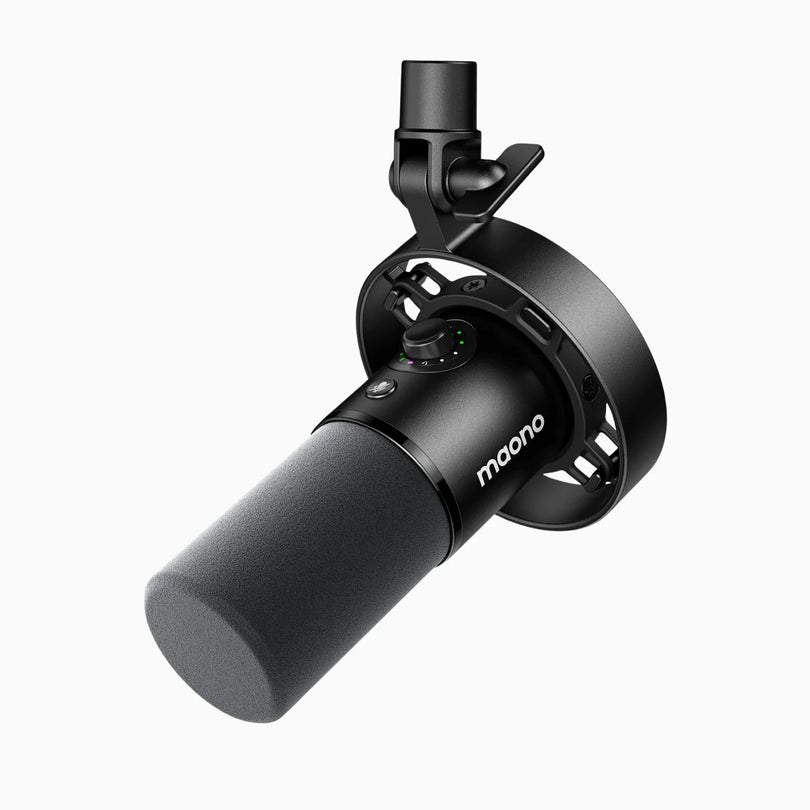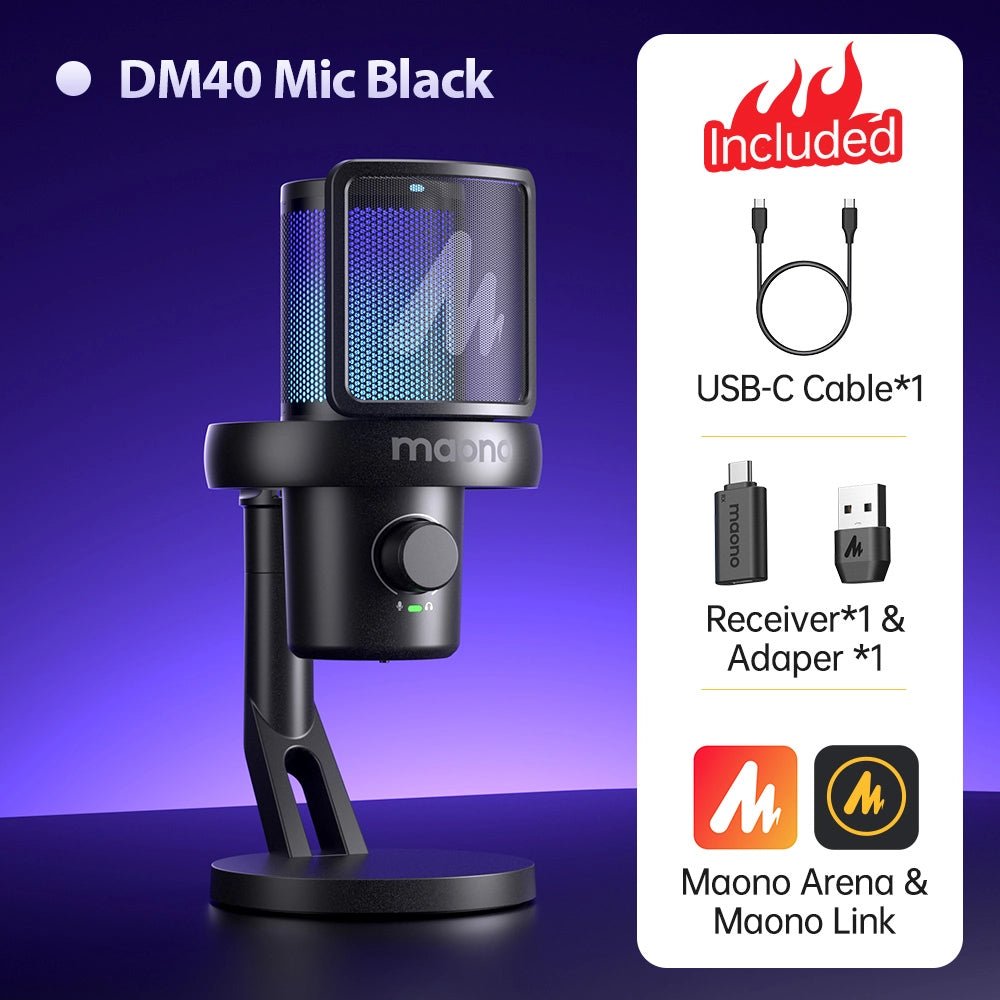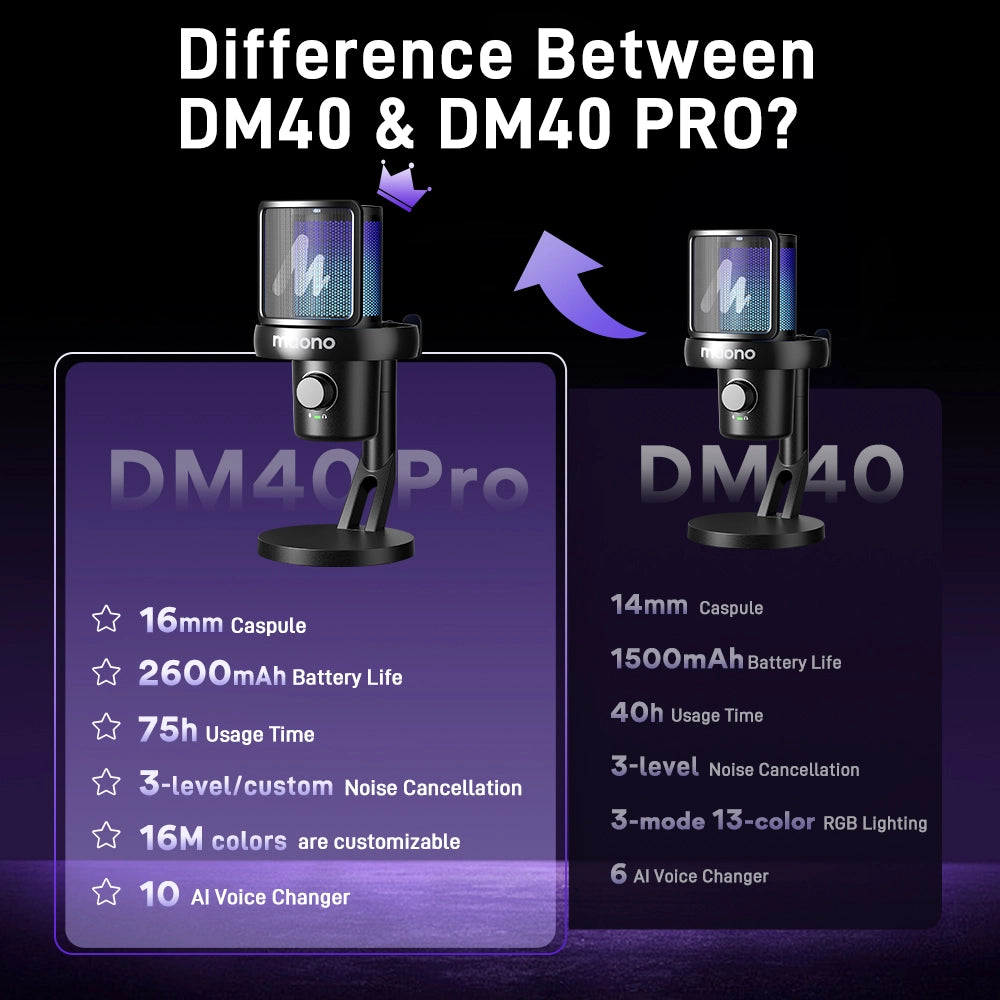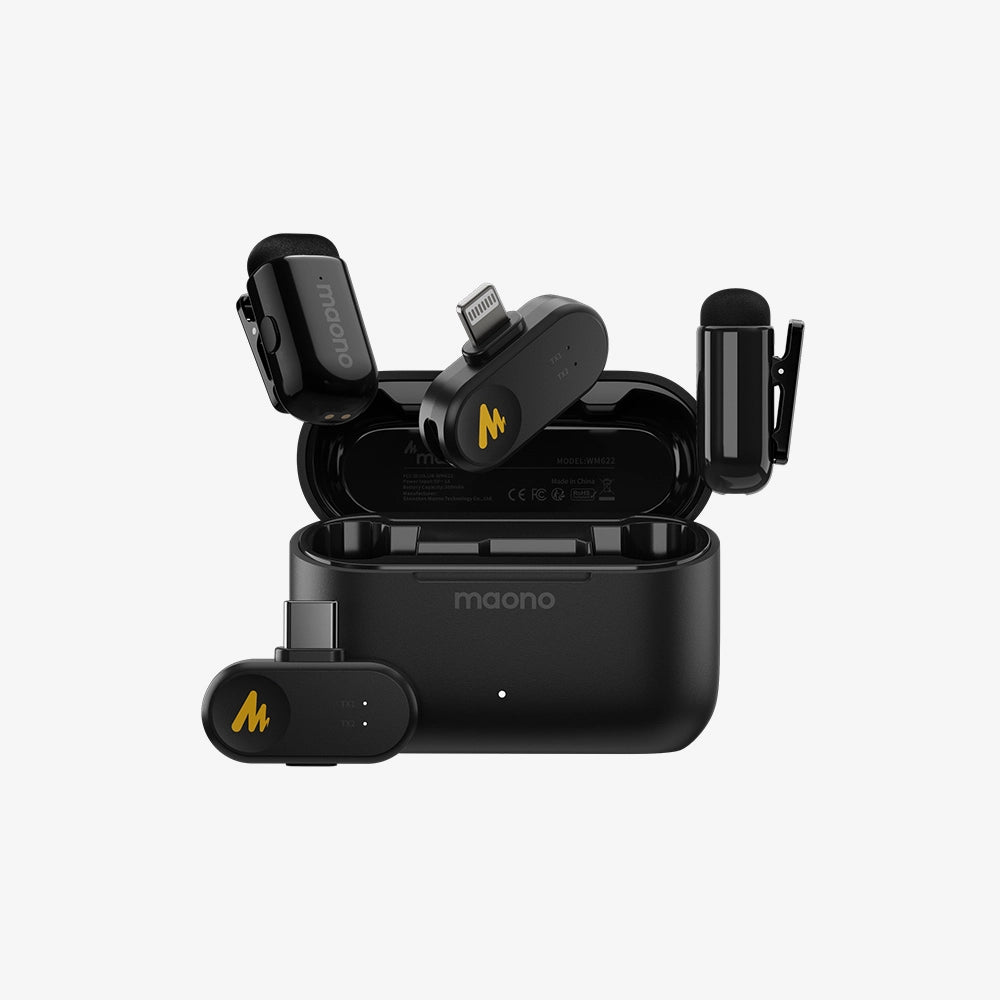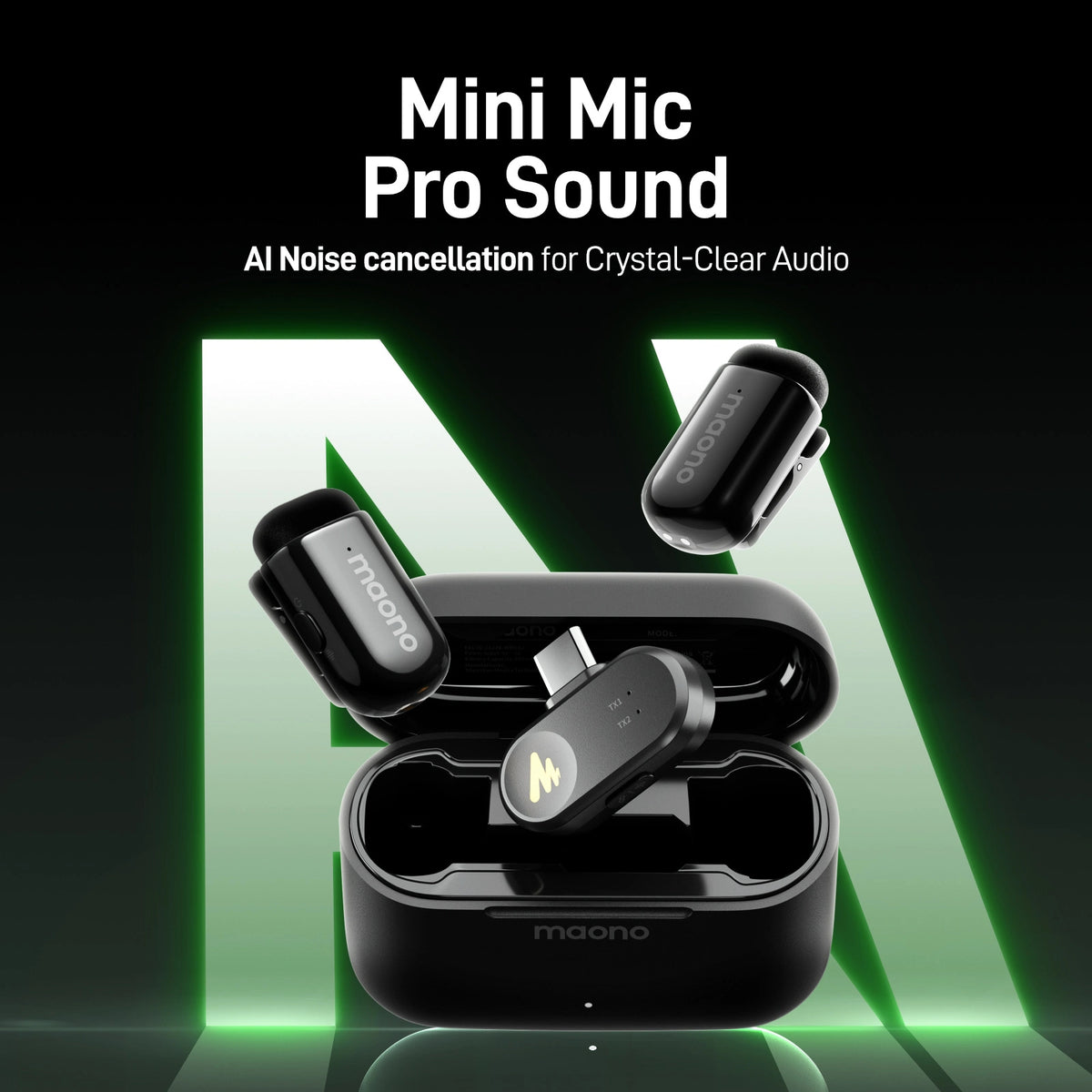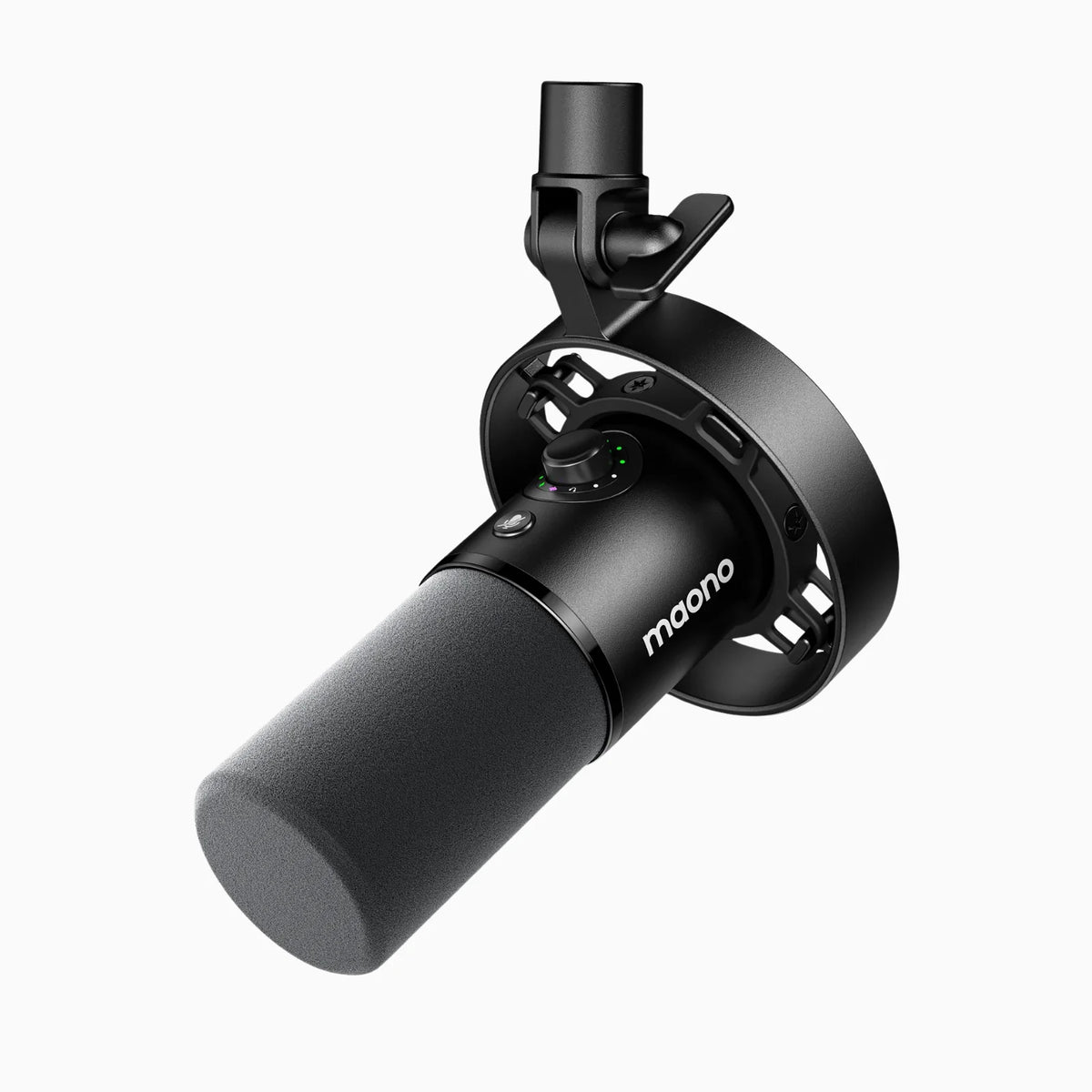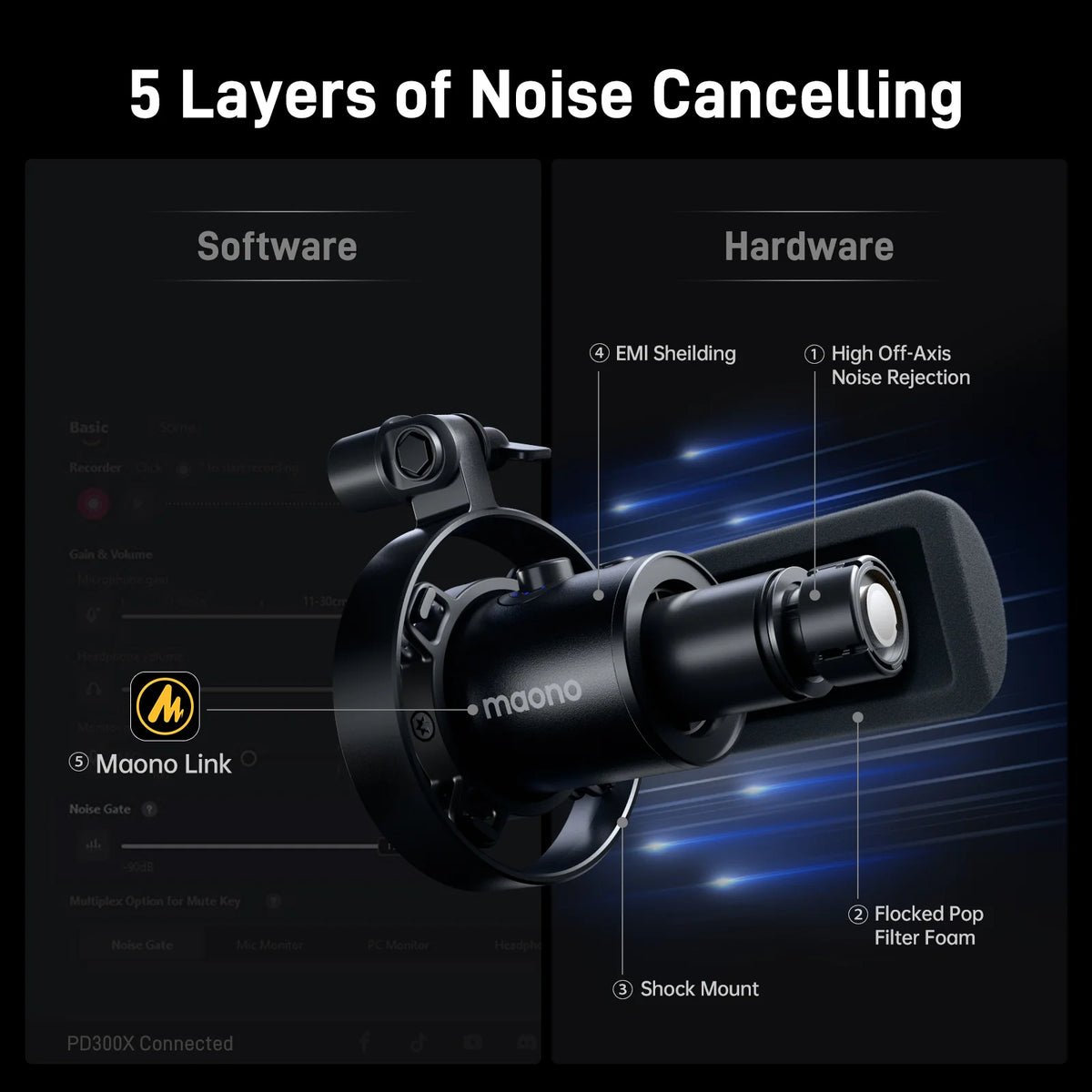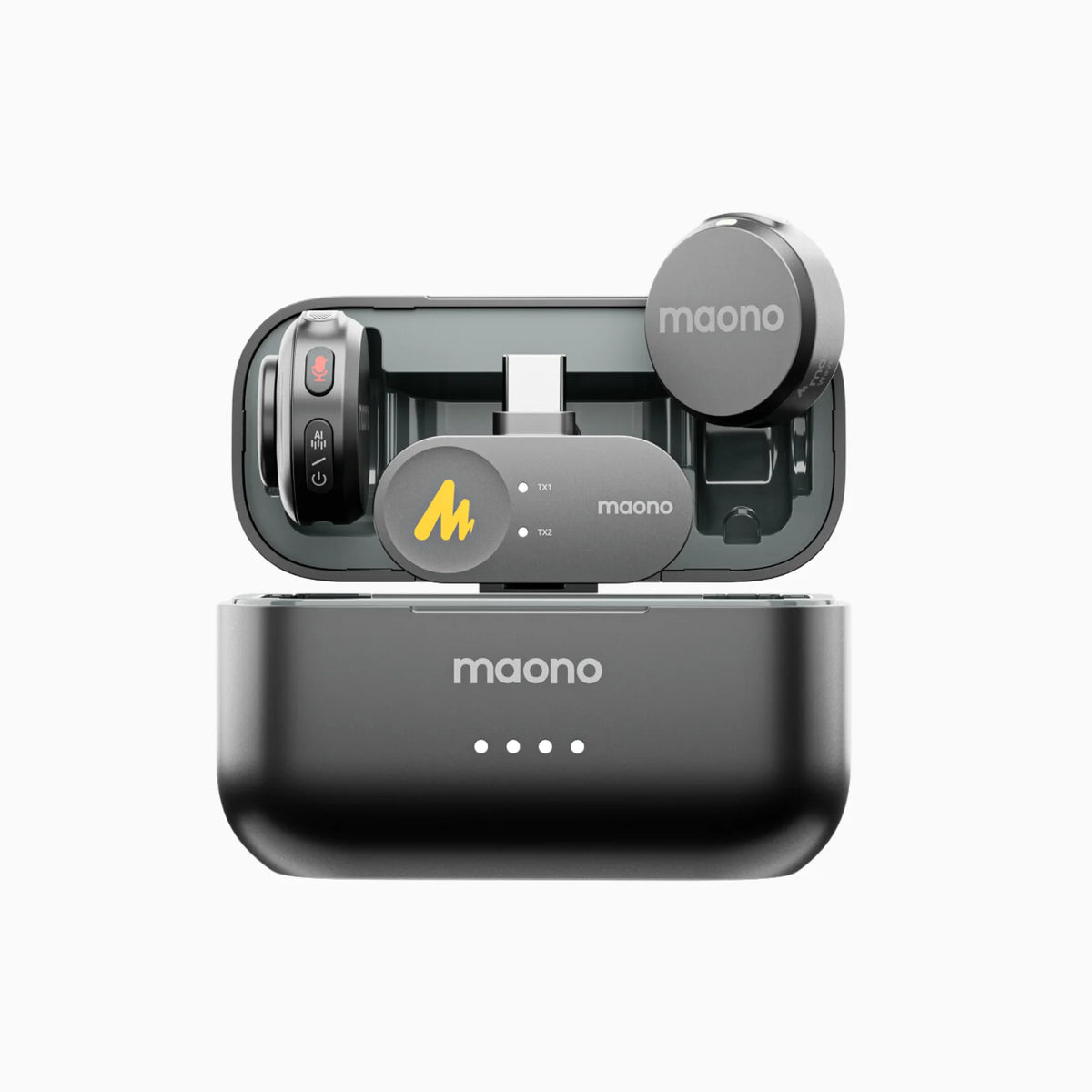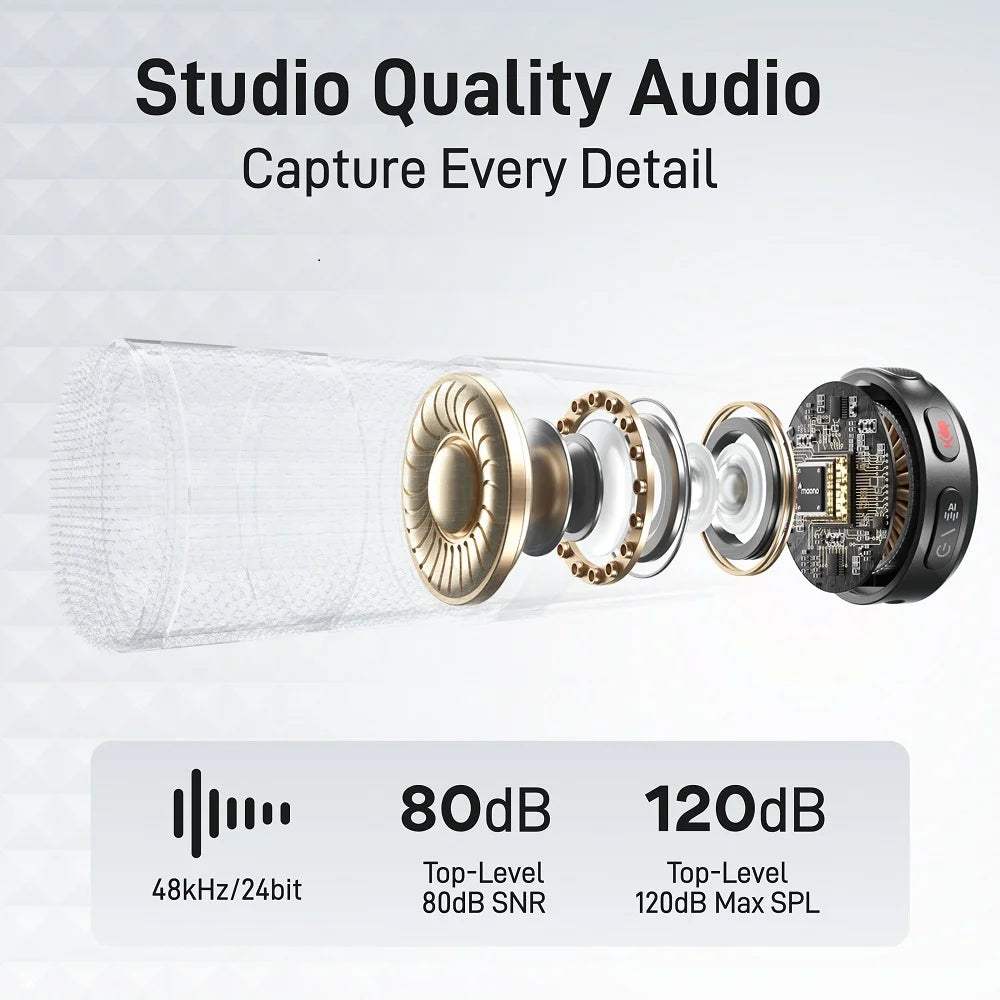Audio quality depends on the equipment used in sound reproduction--it’s not a battle between a cardioid mic and a condenser mic. The most common microphones used by professionals are dynamic mics and condenser mics, and those with excellent audio quality typically feature a cardioid pattern.
In audio recording, choosing the right microphone can make all the difference in capturing clear, professional-quality sound. Two common terms that often come up in discussions are "cardioid mic vs condenser." While these terms are sometimes used interchangeably, they refer to different aspects of microphone technology. Understanding the distinctions between a cardioid mic and a condenser mic, including their polar patterns and internal designs, is crucial for selecting the best microphone for your needs. This article explores the key differences and best uses, and answers frequently asked questions to help you make an informed decision.
What's the Difference Between a Cardioid and a Condenser?
It's important to clarify that "cardioid" and "condenser" refer to different aspects of microphone technology. Cardioid describes a microphone's polar pattern, which is how it picks up sound from different directions. Condenser, on the other hand, refers to the type of microphone technology used. So, a cardioid microphone can be either a condenser or dynamic mic, depending on the internal design.
The Most Common Types of Microphones
Understanding the different types of microphones helps in choosing the right one for your needs. Here’s a brief overview of the most common types:
1. Dynamic Microphones
Definition: Dynamic microphones are known for their robustness and versatility. They use an electromagnetic induction principle to capture sound, which makes them ideal for a variety of applications.
How Dynamic Microphones Work: Dynamic mics consist of a diaphragm attached to a coil of wire, positioned within the magnetic field of a magnet. When sound waves hit the diaphragm, it vibrate, causing the coil to move within the magnetic field. This movement generates an electrical current that is converted into an audio signal.
Scenarios Where They Are Used: Dynamic microphones are well-suited for live performances and recording loud sound sources, such as drums and guitar amps. Their durability and ability to handle high sound pressure levels make them a popular choice for stage and studio work.
2. Condenser Microphones
Definition: Condenser microphones are known for their sensitivity and accuracy. They use an electrically charged diaphragm and a backplate to capture sound.
How Condenser Microphones Work: Condenser mics work on an electrostatic principle. The diaphragm is placed very close to a backplate, forming a capacitor. When sound waves hit the diaphragm, it changes the distance between the diaphragm and backplate, altering the capacitance and generating an electrical signal that is converted into audio.
Scenarios Where They Are Used: Condenser microphones are ideal for capturing detailed and nuanced audio, making them popular in studio recording settings, particularly for vocals, acoustic instruments, and any application where sound quality and clarity are crucial.
3. Ribbon Microphones
Definition: Ribbon microphones are known for their vintage sound quality and delicate design. They use a thin metal ribbon suspended between the poles of a magnet to capture sound.
How Ribbon Microphones Work: When sound waves hit the ribbon, it moves within the magnetic field, creating an electrical signal. Ribbon mics are very sensitive and provide a smooth, natural sound with a distinct character.
Scenarios Where They Are Used: Ribbon microphones are often used in studio settings for vocals and instruments where a warm, vintage sound is desired. They are less common in live sound due to their delicate nature and susceptibility to high sound pressure levels.
Microphone Directionality
Understanding microphone directionality, or polar patterns, is crucial for selecting the right mic for your needs. Here’s a rundown of common polar patterns:
1. Cardioid
Cardioid microphones pick up sound primarily from the front and reject noise from the sides and rear. This pattern is ideal for situations where you want to focus on a single sound source and minimize background noise.
2. Bi-directional
Bi-directional microphones, or figure-8 mics, capture sound from the front and rear while rejecting sound from the sides. They are often used for duet recordings or interviews where sound from two opposite directions is desired.
3. Super- and Hyper-cardioid
Super-cardioid and hyper-cardioid patterns are more focused than standard cardioid mics. They capture sound from the front while rejecting more sound from the sides and rear. They are useful in environments with higher background noise, but they can be more sensitive to off-axis sounds.
4. Omni-directional
Omni-directional microphones capture sound equally from all directions. They are suitable for recording environments where you want to capture the ambiance or multiple sound sources evenly.
5. Shotgun Directionality
Shotgun microphones have a highly directional pickup pattern, allowing them to capture sound from a specific area while rejecting off-axis noise. They are commonly used in film and video production to capture distant sound sources with high clarity.
Are Cardioid Mics Good for Recording?
Cardioid microphones are excellent for recording in many situations, especially when you want to isolate the main sound source from background noise. Their directional nature makes them ideal for vocals, podcasts, and other applications where clarity and focus are essential. They are also effective in live sound environments where minimizing feedback is crucial.
What Is the Difference Between Cardioid Mic vs Condenser?
As mentioned earlier, "cardioid" refers to a polar pattern, while "condenser" refers to a type of microphone. Therefore, a cardioid mic can be either dynamic or condenser. The key difference lies in their construction and usage:
- Cardioid Microphone: Focuses on sound from the front while rejecting side and rear noise. This pattern is useful for reducing background noise and improving clarity.
- Condenser Microphone: This is an electrically charged diaphragm used to capture detailed and accurate sound. Condenser mics are sensitive and suited for studio recording.
What Is the Difference Between a Cardioid Mic and an Omnidirectional Mic?
The main difference between cardioid and omnidirectional microphones lies in their polar patterns:
- Cardioid Mic: Picks up sound primarily from the front and rejects noise from the sides and rear. It’s ideal for focused recordings and environments with potential background noise.
- Omnidirectional Mic: Captures sound equally from all directions, making it suitable for recording ambient sound or capturing multiple sound sources in a balanced manner.
Is a Cardioid Mic Better for Guitar Recording?
A cardioid microphone is often a good choice for recording guitar due to its ability to focus on the sound source and minimize background noise. It captures the guitar's tone clearly while reducing the pickup of room ambiance or other unwanted sounds. However, other microphone types or polar patterns might also be used depending on the specific recording scenario and desired sound.
What Scenarios Would You Use a Cardioid Microphone?
Cardioid microphones are versatile and can be used in various scenarios, including:
- Vocals: Ideal for recording singers, as they capture the voice clearly while minimizing background noise.
- Podcasting: Helps in focusing on the speaker’s voice and reducing ambient noise.
- Live Performances: Effective for capturing sound from a specific source while reducing feedback and noise.
- Recording Instruments: Useful for isolating instruments and capturing their sound accurately.
What Are the Differences Between a Condenser and a Dynamic Microphone? Which One Would You Recommend for a First-Time Buyer?
Condenser Microphones:
- Pros: High sensitivity, excellent for studio recording, captures detailed sound.
- Cons: More sensitive to high sound pressure levels, requires phantom power.
Dynamic Microphones:
- Pros: Durable, handles high sound pressure levels, doesn’t require phantom power.
- Cons: Less sensitive and detailed compared to condensers.
For a first-time buyer, the choice between condenser and dynamic microphones depends on their needs:
- If you’re setting up a home studio or recording vocals and instruments: A condenser microphone might be the better choice for its clarity and detail.
- If you need a versatile, durable microphone for live performances or a variety of recording scenarios: A dynamic microphone would be a good start due to its robustness and ease of use.
The Best Cardioid Mics: Condenser and Dynamic Mics
1. Shure SM57
Mic Type: Dynamic
Frequency Response: 40Hz - 15kHz
Polar Pattern: Cardioid
Connectivity: XLR
Pros:
✅ Highly durable and robust
✅ Excellent for live sound and instrument miking
✅ Versatile with a strong presence in the midrange
✅ Handles high sound pressure levels well
Cons:
❌ Less sensitivity and detail compared to condenser mics
❌ Limited high-frequency response
Price: Approximately $100 - $120
Notable Features:
✅ Industry standard for instrument and vocal miking
✅ Built-in shock mount system reduces handling noise
✅ Compact and rugged design
The Shure SM57 is a dynamic microphone renowned for its versatility and durability. It's a favorite for live performances and studio applications, especially for miking guitars, drums, and vocals. Its cardioid pattern effectively isolates the sound source from background noise, making it a reliable choice for various audio recording situations.
2. Maono PD400XS

Mic Type: Dynamic
Frequency Response: 40Hz-16kHz
Polar Pattern: Cardioid
Connectivity: USB/XLR
Pros:
✅ 3 in 1 Digital knob to adjust gain before feedback
✅ Excellent for capturing loud sound sources
✅ Effective rejection of side and rear noise
✅ Built-in pop filter reduces plosives
Cons:
❌ Less sensitive than condenser microphones
❌ Limited high-frequency response
Price: Approximately $209.99
Notable Features:
✅ Cardioid pattern provides tighter sound pickup
✅ Durable construction suitable for live sound
✅ Clear and focused sound reproduction
✅ Compatible software: Maono link and Maono Arena
The PD400XS is a dynamic microphone designed for professional use, offering a super-cardioid polar pattern that provides excellent isolation from unwanted noise. It's well-suited for high-pressure sound sources and live performance environments. Its robust build ensures reliable performance in various settings.
3. Maono PM450S
Mic Type: Condenser
Frequency Response: 20Hz - 20kHz
Polar Pattern: Cardioid
Connectivity: USB
Pros:
✅ High sensitivity and clarity
✅ Easy to use with plug-and-play USB connectivity
✅ Excellent for studio recording and streaming
✅ Includes built-in preamp and digital conversion
✅ 3 in 1 knob for adjusting volume, gain, and monitoring effects
Cons:
❌ Requires phantom power if used with XLR (not applicable for USB)
❌ Less suitable for high sound pressure levels
Price: Approximately $159.99
Notable Features:
✅ USB connectivity for easy setup
✅ Integrated shock mount and pop filter
✅ High-resolution audio capture
✅ Compatible software: Maono link and Maono Arena
The Maono PM450S is a condenser USB microphone designed for high-quality audio capture in a variety of applications, including streaming, podcasting, and recording. Its cardioid pattern effectively isolates the speaker's voice, and the USB connection makes it a convenient choice for users who want a straightforward setup without needing additional equipment.
FAQs
1. How do I set up a cardioid mic for optimal sound quality?
To set up a cardioid mic for optimal sound quality, position it so that it faces the sound source directly. Ensure that the microphone is at an appropriate distance from the source to avoid distortion. Use a pop filter to reduce plosive sounds and an adjustable stand to minimize vibrations.
2. What are the benefits of using a cardioid microphone?
Cardioid microphones offer focused sound capture from the front while rejecting noise from the sides and rear. This makes them ideal for reducing background noise and improving clarity in recordings or live performances.
3. How do cardioid microphones handle background noise and sound isolation?
Cardioid microphones are designed to minimize background noise by rejecting sound from the sides and rear. This polar pattern helps isolate the main sound source, making it effective for reducing unwanted ambient noise and improving overall sound quality.
4. Are cardioid microphones suitable for live streaming and podcasting?
Yes, cardioid microphones are well-suited for live streaming and podcasting due to their ability to capture clear and focused audio while minimizing background noise. Their directional pattern ensures that the speaker's voice is prominent and intelligible.
Conclusion
Whether it's a cardioid mic or condenser, choosing the right microphone involves understanding the differences between various types (cardioid microphone vs condenser or cardioid vs dynamic) and their applications. Cardioid microphones, with their focused pickup pattern, offer excellent clarity and noise rejection, making them a great choice for many recording scenarios. Condenser microphones provide detailed sound reproduction, while dynamic microphones offer durability and versatility. By considering your specific needs and the environment in which you'll be recording, you can select the microphone that best suits your requirements and enhances your audio experience.




